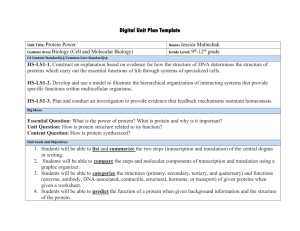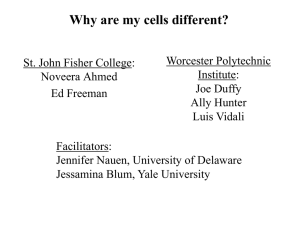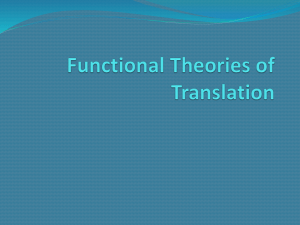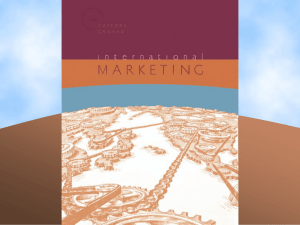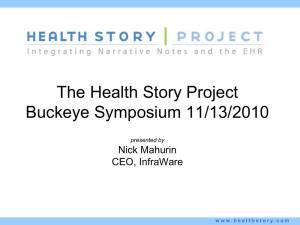protein synthesis
advertisement
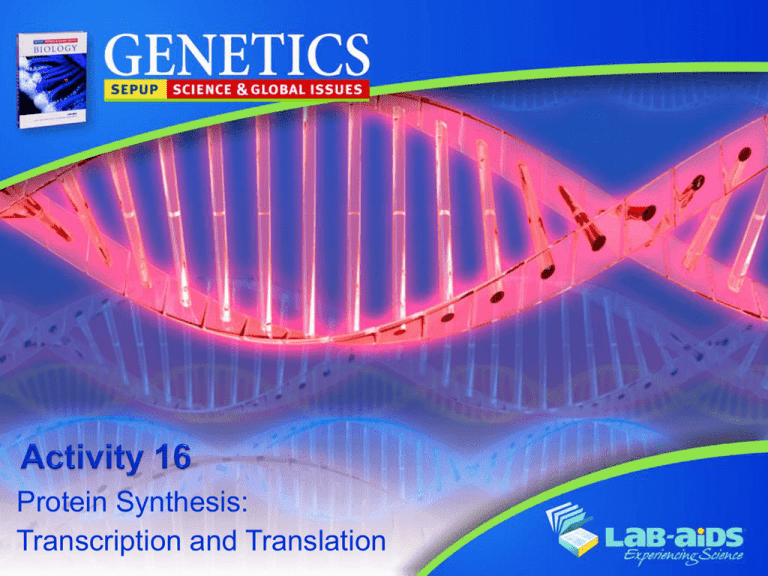
Protein Synthesis: Transcription and Translation LIMITED LICENSE TO MODIFY. These PowerPoint® slides may be modified only by teachers currently teaching the Science and Global Issues SEPUP course to customize the unit to match their students’ learning levels or to insert additional teaching aides. Modified slides may be used only by the modifying teacher in his or her classroom, or shared with other teachers of Science and Global Issues within the teacher’s school district, with these same restrictions. Modified slides may not be taken out of the classroom or distributed to any non-student person or organization. Except for use with students in the classroom, modified slides may not be published in printed or electronic form, including posting on the Internet. Only text may be modified: photographs and illustrations on the slides may not be modified in any way except to change their size. DISCLAIMER OF WARRANTY. THE REGENTS OF THE UNIVERSITY OF CALIFORNIA (“University”) MAKE NO REPRESENTATIONS OR WARRANTIES, EXPRESS OR IMPLIED, INCLUDING BUT NOT LIMITED TO THE IMPLIED WARRANTIES OF MERCHANTABILITY AND FITNESS FOR A PARTICULAR PURPOSE. University will not be liable for any costs, damages, fees or other liability, nor for any direct, indirect, special, incidental or consequential damages (including lost profits) with respect to any claims by the purchaser or user of Science and Global Issues or any third party on account of or arising from the use or modifications to the slides. Client acknowledges and accepts that University services are provided on an as-is basis. Activity 16: Protein Synthesis: Transcription and Translation Get Started Think of a corn cell that is genetically modified to contain the Bt gene and a corn cell that is not modified. ◦ In what ways are the cells similar? ◦ In what ways are the cells different? Activity 16: Protein Synthesis: Transcription and Translation Get Started What is the relationship between DNA and proteins in a cell? Activity 16: Protein Synthesis: Transcription and Translation Introduction Read the introduction. Protein synthesis is the process in which a cell makes a protein. It has two phases. Transcription is the first phase, where DNA is converted into mRNA. Translation is the second phase, where the mRNA is converted to tRNA and a protein molecule is assembled. Activity 16: Protein Synthesis: Transcription and Translation Challenge How does a cell make proteins with the information from DNA? Activity 16: Protein Synthesis: Transcription and Translation Procedure Activity 16: Protein Synthesis: Transcription and Translation Procedure As you view the simulation, be sure to correct the order of the Transcription and Translation cards, as needed. Activity 16: Protein Synthesis: Transcription and Translation Procedure The correct card order is: D, F, E, J, A, H, B, G, C, I Activity 16: Protein Synthesis: Transcription and Translation Procedure Try different sorts of insertions, deletions, substitutions, and frameshifts to see if you can determine what the effects of various mutations are. Activity 16: Protein Synthesis: Transcription and Translation Procedure Activity 16: Protein Synthesis: Transcription and Translation Follow Up Analysis 1 Define protein synthesis and describe how it works. Activity 16: Protein Synthesis: Transcription and Translation Follow Up Analysis 2 Copy the chart from the student book in your science notebook. Fill in the chart to determine the amino acid sequence that results from the transcription and translation of the following nucleotide sequence: 5’ TACTCGGCATTGTGA 3’ Activity 16: Protein Synthesis: Transcription and Translation Follow Up Analysis 4 One night while watching TV you hear a newscaster say, “DNA mutations cause damaged proteins.” Based on your work in Part B, how would you respond to this claim? Activity 16: Protein Synthesis: Transcription and Translation Revisit the Challenge How does a cell make proteins with the information from DNA? Activity 16: Protein Synthesis: Transcription and Translation Key Vocabulary amino acid DNA mRNA mutation protein protein synthesis Activity 16: Protein Synthesis: Transcription and Translation replication RNA transcription translation


